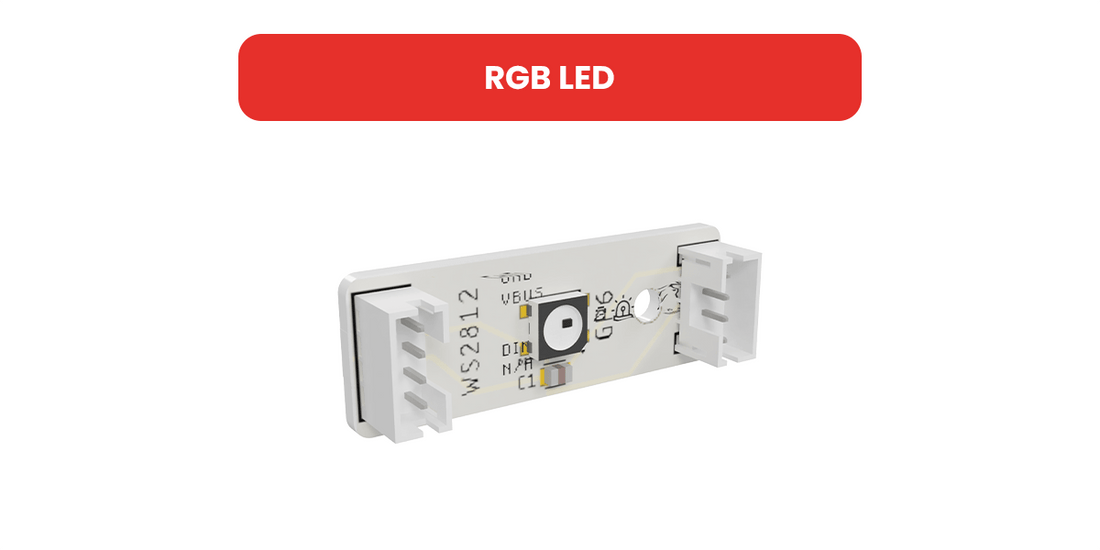RGB lights, short for Red, Green, and Blue lights, are a type of lighting technology that allows for a wide range of colors to be produced by mixing these primary colors in different combinations and intensities. RGB lights are often used in various applications, including home and commercial lighting, displays, signage, and entertainment systems. These lights are typically composed of individual LEDs (Light Emitting Diodes) that emit these primary colors.

Table of Contents
How Does an RGB Led Work?
An RGB LED, containing red, green, and blue diodes in one unit, creates a spectrum of colors through additive color mixing. Each diode's intensity is independently controlled, often using Pulse Width Modulation, allowing for the creation of various colors, including secondary hues and white light.
Step by step explanation:
-
Three Diodes in One: An RGB LED actually contains three separate light-emitting diodes (LEDs) in one casing. There's a red, green, and blue diode.
-
Color Mixing: By adjusting the intensity of each diode, different colors can be created. The RGB color model is based on additive color mixing, where the three colors are combined in various ways to produce a wide range of colors.
-
Controlling the LEDs: Each diode (red, green, and blue) can be controlled independently. This is typically done using a microcontroller or a specialized LED driver circuit. The intensity of each diode is often controlled using a method called Pulse Width Modulation (PWM), which rapidly turns the LED on and off at a frequency too high for the human eye to detect, effectively controlling the brightness.
-
Creating Colors: By varying the intensity of each of the red, green, and blue LEDs, you can mix these primary colors to produce secondary colors. For instance, red and green light mixed together appear yellow, green and blue light appear cyan, and blue and red light appear magenta. Combining all three produces white light.
-
Applications: RGB LEDs are used in a wide range of applications, including display screens, mood lighting, decorative lighting, and in devices where visual feedback through different colors is needed.
-
Energy Efficiency: Like other LEDs, RGB LEDs are energy-efficient and have a long lifespan compared to traditional lighting methods.
RGB Led Circuit Diagram

Difference Between RGB and Led Lights
The main differences are: RGB LEDs offer multiple colors and require controllers for color and brightness adjustments, making them more complex and suitable for dynamic color applications like mood lighting. Both are energy efficient, but RGB LEDs tend to be costlier due to their functionality and control needs, yet both have long lifespans.
-
LED Lights: LED stands for Light Emitting Diode. It's a type of lighting technology that is known for its energy efficiency and long lifespan. LEDs use a semiconductor to convert electricity into light, and they can emit a range of colors based on the material used in the semiconductor. However, standard LEDs typically emit a single color per unit.
-
RGB Lights: RGB stands for Red, Green, and Blue. RGB lighting is a specific type of LED light where the unit combines these three colors. By adjusting the intensity of each color, RGB LEDs can create a wide spectrum of colors, including white light. This is done through a process known as additive color mixing. RGB LEDs are essentially a more advanced and versatile form of LED lighting.
-
Key Differences:
- Color Range: Standard LED lights emit a single color, whereas RGB LEDs can produce a wide range of colors by mixing red, green, and blue light.
- Complexity and Control: RGB LEDs are more complex and usually require a controller to adjust the color and brightness, while standard LEDs are simpler and emit a constant color and brightness.
- Applications: While standard LEDs are used for general lighting purposes, RGB LEDs are often used in scenarios where dynamic or customizable color lighting is desired, such as in mood lighting, decorative applications, and display technology.
-
Energy Efficiency: Both RGB and standard LEDs are more energy-efficient compared to traditional lighting options like incandescent or fluorescent lights.
-
Cost and Maintenance: RGB LEDs can be more expensive than standard LEDs due to their additional functionality and the need for control systems. However, both types have long lifespans, reducing the need for frequent replacements.
-
Usage in Technology: RGB LEDs are particularly popular in electronics and entertainment devices, offering customizable color options, which are not available with standard LEDs.
Click for learn more: What is Led Lights?
FAQ
What is RGB Led used for?
RGB LEDs are used for creating customizable lighting colors in various applications, such as mood lighting, decorative lighting, display screens, and devices where visual feedback through color is needed.
How o you identify RGB Leds?
You can identify RGB LEDs by their three small light-emitting areas inside the casing, typically in red, green, and blue colors, and often they have four pins instead of two.
Do Tvs use RGB Leds?
Yes, many modern TVs use RGB LEDs to create a wide range of colors on the screen through the combination of red, green, and blue light.
Is RGB better than white light?
Whether RGB is better than white light depends on the application. RGB offers a range of colors, ideal for mood lighting and aesthetic purposes, while white light is better for general illumination and tasks requiring clear visibility.
Is RGB LED analog or digital?
RGB LEDs can be both analog and digital. Analog RGB LEDs control colors through varying power levels, while digital RGB LEDs use a microcontroller for precise color control per LED.





